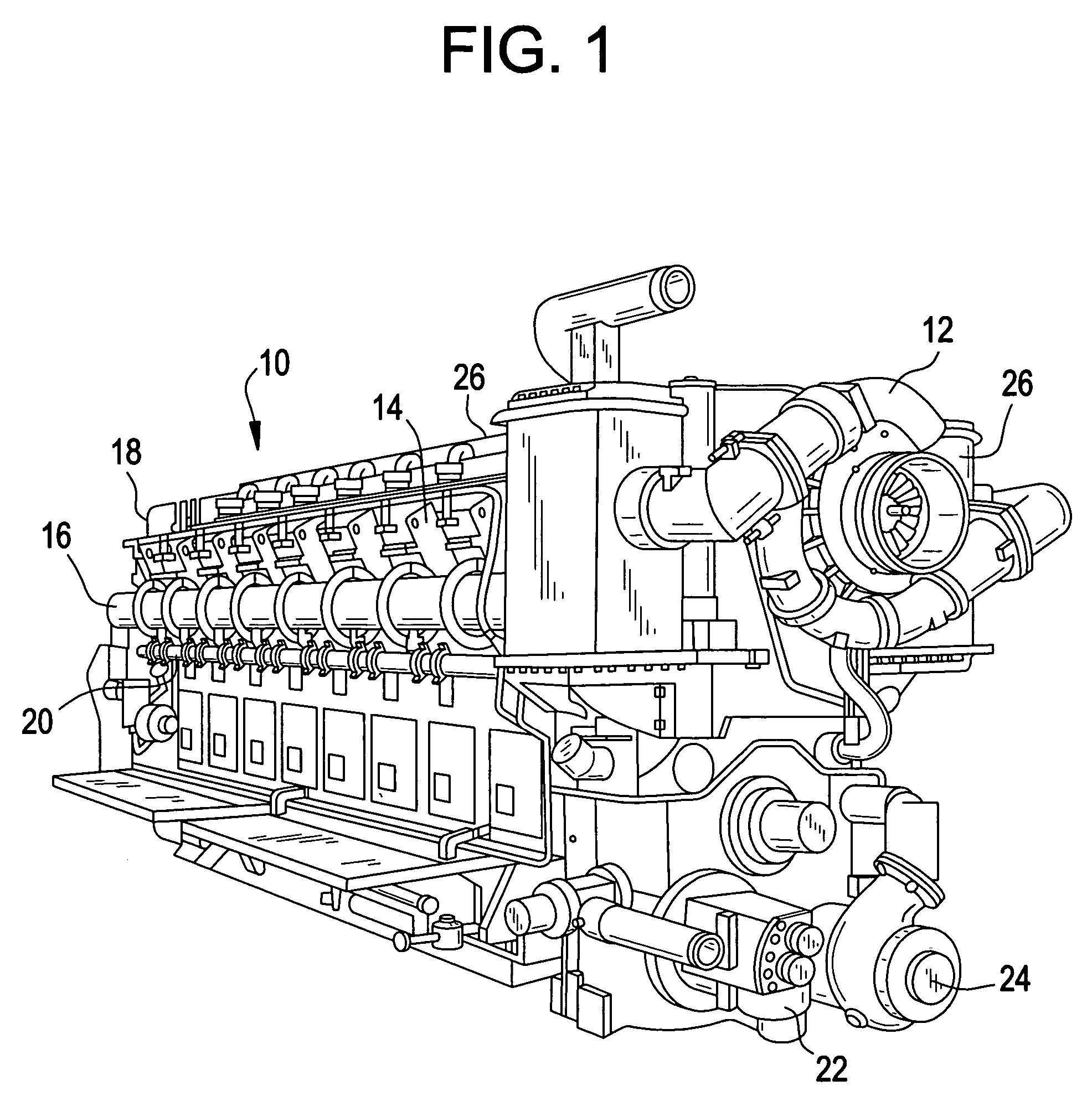Apparatus and method for suppressing internal combustion ignition engine emissions
a technology of internal combustion engine and internal combustion engine, which is applied in the direction of electric control, speed sensing governor, machines/engines, etc., can solve the problems of insufficient air to support the complete combustion of the fuel, the fuel is later burned and subject to high temperatures, and the effect of reducing emissions
- Summary
- Abstract
- Description
- Claims
- Application Information
AI Technical Summary
Benefits of technology
Problems solved by technology
Method used
Image
Examples
Embodiment Construction
[0020]FIG. 2 is a schematic of one embodiment of the disclosed apparatus for suppressing internal combustion engine emissions. Many of the embodiments are discussed here below with respect to large, medium speed compression ignition engines of the type used on railroad locomotives subject to transient modes of operation, such as arising from changes in engine throttle notch position, differences between commanded and actual engine speed, and the imposition of loads on the engine over short periods of time. A compression ignition engine 10 is shown operatively coupled to an electronic fuel injection system 34. Communicably coupled to the engine 10 and electronic fuel injection system 34 is an engine monitor 30. In this embodiment, the engine monitor 14 monitors the engine, and determines when the engine is in a transient mode. In another embodiment, the electronic fuel injection system 34 may incorporate the engine monitor 30. When in a transient mode, the monitor 30 communicates thi...
PUM
 Login to View More
Login to View More Abstract
Description
Claims
Application Information
 Login to View More
Login to View More - R&D
- Intellectual Property
- Life Sciences
- Materials
- Tech Scout
- Unparalleled Data Quality
- Higher Quality Content
- 60% Fewer Hallucinations
Browse by: Latest US Patents, China's latest patents, Technical Efficacy Thesaurus, Application Domain, Technology Topic, Popular Technical Reports.
© 2025 PatSnap. All rights reserved.Legal|Privacy policy|Modern Slavery Act Transparency Statement|Sitemap|About US| Contact US: help@patsnap.com



